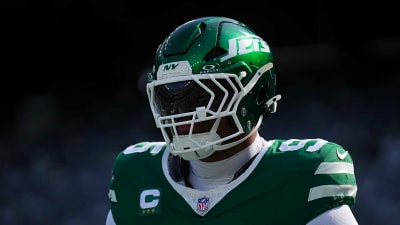
Are the Pelicans a playoff threat?
The New Orleans Pelicans are excellent on offense and defense. They've won 14 of their last 18 games. Is the NBA sleeping on them as a contender?
Over their last 15 games the Pelicans rank:
— The Lead (@TheLeadSM) March 11, 2024
- 1st in the NBA in defensive rating
- 1st in the NBA in steals
- 2nd in the NBA in opponent paint PTS
- 2nd in the NBA in net rating
- 2nd in the NBA in points off TOV
The Pels are playing a hard & scrappy brand of basketball pic.twitter.com/SrURRYBQzE
New Orleans has the fourth-best point differential in the NBA, outscoring their opponents by an average of 5.3 points per game, trailing only the Boston Celtics, Oklahoma City Thunder and Minnesota Timberwolves. Yet the team's playoff odds don't reflect this. New Orleans is +7500 to win the NBA title, tied with the Sacramento Kings for the 15th-best title chances.
Part of this discrepancy between performance and expectation comes from the Pelicans' track record of playoff success. Which is sparse. In the post-Anthony Davis era, this team won two playoff games against the Phoenix Suns in 2022 and missed the playoffs every other season. In their biggest game this season, the Lakers beat the Pelicans 138-99 in the semifinals of the in-season tournament.
They also don't have a track record of health. Zion Williamson has missed more than half of the games in his five-year career and former All-Star Brandon Ingram has been plagued with injuries in New Orleans. Last year the Pelicans were tied for second in the Western Conference before Williamson's hamstring injury and Ingram's toe problems sunk them into the play-in zone.
This year, they've got a healthy roster apart from reserve Dyson Daniels' meniscus injury. It's other teams in the Western Conference that are getting injured in 2023-24.
Another difference this season is that the Pelicans are finally a three-point shooting threat. They're fifth in the NBA in three-point percentage, with CJ McCollum leading the way. He's making 3.3 triples per game at a 41.7 percent clip. Defensive specialist Herb Jones is making over half of his three-pointers in 2024, and shooting 43.5 percent for the season. Trey Murphy has picked it up since missing the start of the season with injury, sinking 10 threes in a game on March 5.
The result is a team that isn't relying as heavily on Ingram and Williamson to score. They've been using Williamson as a point guard at times, which shows in his career-high 5.2 assists per game.
It's not impossible to think New Orleans could have home-court in a first-round series this year. Teams might prefer to play them in April rather than more star-laden, experienced playoff teams. But considering how the team has been playing in the past few months, that could be a big mistake.
More must-reads:
- The Suns are the Nuggets' biggest threat in the Western Conference
- Paul George names the toughest NBA player to score on
- The 'NHL all-time goal leaders' quiz
Breaking News
Trending News
Customize Your Newsletter
 +
+
Get the latest news and rumors, customized to your favorite sports and teams. Emailed daily. Always free!








